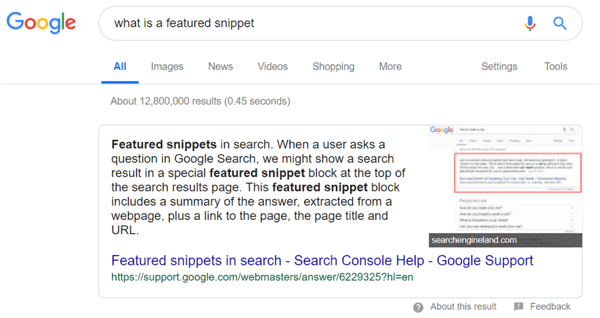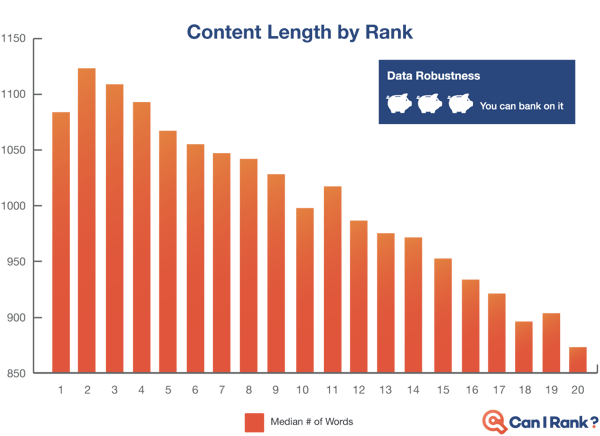Every year, the search results pages for your industry become increasingly crowded. It’s the truth for every industry.
As the internet ages, more content is created. More companies dedicate themselves to creating high-quality content for their industry. Naturally, things get a little more crowded.
68% of online experiences begin with a search engine. 53.3% of all website traffic comes from organic search.
But with that increased competition, that means that you have to turn things up to see the same results through SEO that companies were able to generate just five years ago.
You need to go above and beyond with your content. To rank, you need to give the search engines what they want. And what they want is an informative, easy experience for their users.
Google wants to instantly connect searchers with the exact content that they are hoping to find. The better that you can cater to the intent of the searcher, the more likely you will be able to rank.
Creating content that ranks is different than it was just a few years ago. Today it’s part research, part usability, and part technical.
Here are some simple tips that can help any company to create high-value SEO content that converts searchers into new customers.
Usability is a Primary Concern
Everyone knows that if you want to rank for high volume keywords, you have to create great content. That’s just a given at this point.
But one area where many companies fall short is in usability. You want to make sure that the content that you publish is not just insightful — but easily consumed by your audience.
Usability can refer to many things when it comes to content. First and foremost, you want to make sure that you’re content is skinnable in the easy to read and retain. Write clearly. Make your points using simple words, not jargon. Make your content actionable.
Use lots of bullet points to break up your information into bite-sized chunks. If someone is looking for a very specific piece of information, try to find ways to make it as easily accessible using formatting as possible.
Additionally, you want your website, in general, to be easy to use. There should be no confusing ads, calls to action, or anything that would otherwise detract from the users’ experience when on your website.
Engagement analytics play a critical role in how your website ranks. Google is constantly tracking how long users stay on your website, whether they engage with other pages on your website when they arrive, and whether or not they seem to be satisfied with the result they were given. They use this information to determine whether or not a website is delivering what their users were hping to find.
Also — using structured data like tables, bulleted lists, and numbered lists within your content can make your content more likely to be included in the featured snippet. 12.29% of search queries have featured snippets in their search results.
Here’s what a featured snippet looks like:

Source: SmartInsights
Catering to the search intent of users is a key piece of improving your ranking, and delivering a better experience to your website visitors.
Use Visuals to Supplement Written Content
The content that you share shouldn’t only be written. You should branch out to other mediums to connect with your audience as well. In recent years, we have seen video marketing and podcasting become much more prominent tools in the marketing tool box.
Supplement your written content with interesting images, videos, or even audio, giving your audience more say over how they consume the information that you provide. You want to make your most important content as easy to consume as possible. And that can mean different things to different people.
On your website, make sure to include images that illustrate complex points or share additional information with the reader. This also goes back to usability. A more visual approach toward presenting information makes your website easier to engage with, by making it easier for your customers to find information.
Go Deeper for Ranking SEO Content
If you want to rank for highly valuable industry Search terms, make the best content in your industry.
A lot of times it is truly that simple. If you go above and beyond and create a resource that is clearly industry-leading, Google often ends up rewarding that.
Now, it is important to understand that death doesn’t necessarily refer to length. You don’t have to write 10,000 word articles to rank for every keyword, you just need to create the best piece of content available on that subject.

Source: CanIRank?
Companies would be smarter to spend more of their budget creating higher quality content, rather than just publishing as many pieces as possible.
A great inbound strategy relies on great content. Go deeper into the subject that you cover and flesh things out in ways that the competition has not.
Headlines Matter
When it comes to simple tactics that you can use to increase the ranking of your content, few things have more impact and are often overlooked than the headlines within your content.
Your H2 and H3 header tags in your articles and website content should always include the keyword that you are targeting in some fashion. In fact, if you can include the keyword directly in multiple headers, that is best. You are signaling to Google that your piece of content is specifically catered for individuals that are looking for information on that topic.
Now, you can’t just stuff keywords into your headlines until they don’t make sense anymore. You have to find a relevant and reasonable way to include them. But often, companies completely underestimate the impact that they’re heading tags can have in signaling relevance on a particular topic to Google.
Let’s Talk SEO
Want to figure out what high-impact tasks will move the needle for your website’s search presence. Schedule a call today.
![]()